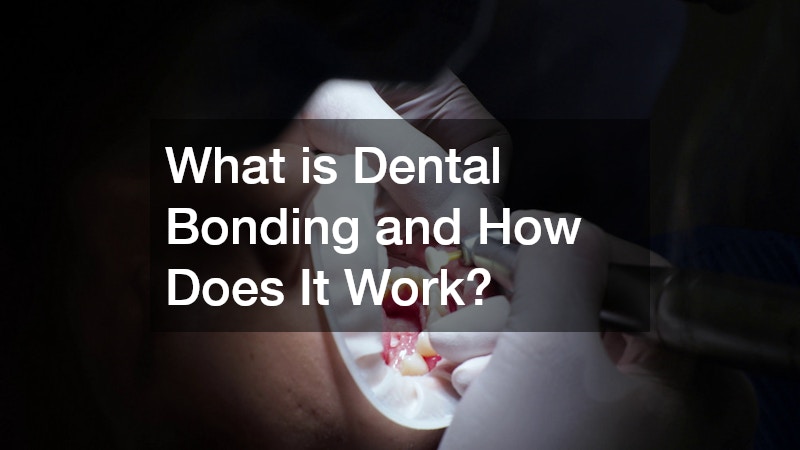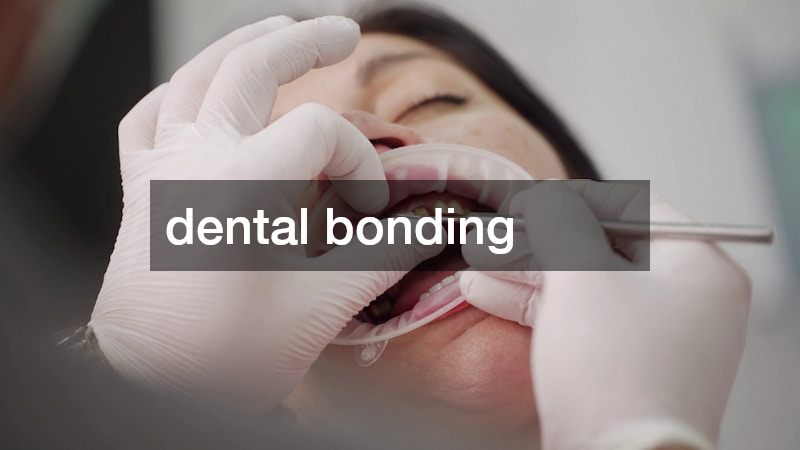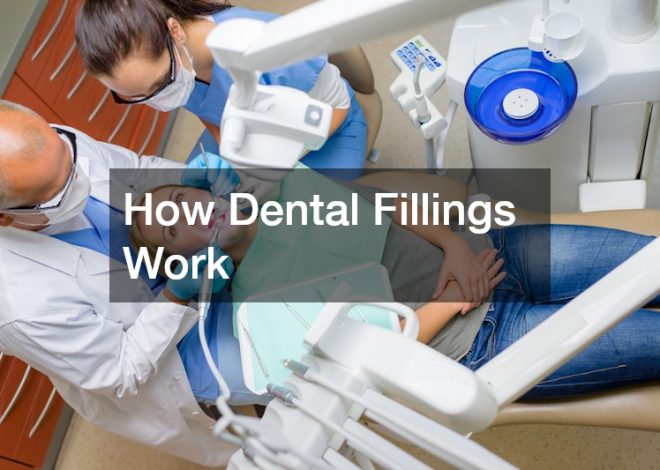
What is Dental Bonding and How Does It Work?

Dental bonding is a popular cosmetic dentistry procedure designed to enhance the appearance and function of teeth. It is a versatile, relatively quick, and affordable solution for addressing various dental concerns — from chipped and cracked teeth to discoloration and minor gaps. By using a tooth-colored resin material that bonds directly to the tooth’s surface, dental bonding helps restore a natural and attractive smile without the need for extensive dental work.
This guide will walk you through what dental bonding is, how it works, its benefits, drawbacks, and what to expect during and after the procedure.
Understanding Dental Bonding
Dental bonding is a cosmetic and restorative dental procedure where a dentist applies a tooth-coloured composite resin to enhance the shape, colour, or function of a tooth. The material is moulded to the desired form, hardened using a curing light, and then polished so it blends seamlessly with the surrounding teeth.
Unlike dental veneers or crowns, which require custom creation in a lab, bonding is typically completed in just one appointment. This makes it a quick and minimally invasive solution for those who want noticeable results without the wait or extensive preparation.
If you’re thinking about getting dental bonding, it’s best to speak with your dentist to see if it suits your oral health goals. In many cases, achieving a brighter, more even smile can happen in just a single visit.
Common Reasons for Dental Bonding
Dentists often recommend bonding for a variety of cosmetic and functional purposes, such as:
-
Repairing chips or cracks caused by trauma or biting on hard substances.
-
Closing small gaps between teeth without orthodontic treatment.
-
Reshaping teeth to make them appear more uniform.
-
Covering discoloration or stains that do not respond well to teeth whitening.
-
Protecting exposed tooth roots caused by gum recession.
-
Lengthening teeth for improved symmetry.
Because the composite resin is color-matched to your natural teeth, it blends seamlessly, making it almost impossible for others to detect the repair.
How Dental Bonding Works – Step-by-Step
The dental bonding procedure is relatively straightforward and usually takes 30–60 minutes per tooth. Here’s a detailed look at the process:
1. Initial Consultation and Planning
The journey begins with a dental examination. Your dentist will assess the condition of your teeth, discuss your goals, and determine whether bonding is the best solution for your needs. If you have underlying issues like cavities or gum disease, these must be addressed first.
2. Shade Selection
For a seamless and realistic result, your dentist will choose a composite resin shade that best matches the natural colour of your teeth. This careful selection helps the treated area blend smoothly with the rest of your smile, making the bonding virtually unnoticeable.
3. Tooth Preparation
Most bonding procedures require minimal preparation. In many cases, anesthesia isn’t necessary unless the bonding is used to fill a decayed tooth or repair a deep chip. The dentist slightly roughens the tooth’s surface and applies a conditioning liquid to help the resin adhere.
4. Application of the Resin
The tooth-colored resin is applied to the prepared tooth. The dentist shapes and moulds it carefully, ensuring the desired form is achieved.
5. Hardening with a Curing Light
Once the resin is in place, a special blue light or laser is used to harden it. This process only takes a few seconds and solidifies the material.
6. Final Shaping and Polishing
After curing, the dentist further trims and shapes the resin for a comfortable bite and smooth appearance. Finally, the bonded tooth is polished to match the sheen of your natural teeth.
Advantages of Dental Bonding
Dental bonding offers several benefits that make it a popular choice among patients:
-
Minimally Invasive – Requires little to no removal of natural tooth enamel.
-
Quick Results – Can be completed in a single appointment.
-
Cost-Effective – Less expensive than veneers or crowns.
-
Natural Appearance – Resin is colour-matched to blend seamlessly.
-
Versatile – Suitable for both cosmetic and functional improvements.
Potential Drawbacks to Consider
While dental bonding has many advantages, it also comes with a few limitations:
-
Durability – Not as strong as crowns or veneers; may chip or wear down over time.
-
Stain Susceptibility – Resin can stain from coffee, tea, wine, or tobacco.
-
Shorter Lifespan – Typically lasts 3–10 years, depending on care.
-
Best for Minor Repairs – May not be suitable for major restorations.
Aftercare Tips for Dental Bonding
Proper care is essential to prolong the life of bonded teeth. Here are some aftercare recommendations:
-
Practice Good Oral Hygiene – Brush twice daily and floss regularly.
-
Avoid Biting Hard Objects – Do not chew on ice, pens, or fingernails.
-
Limit Stain-Causing Foods and Drinks – Reduce coffee, tea, and red wine intake.
-
Schedule Regular Dental Visits – Professional cleaning and check-ups help maintain bonding quality.
-
Wear a Mouthguard – If you grind your teeth at night, a nightguard can prevent damage.
Who is a Good Candidate for Dental Bonding?
Dental bonding is ideal for individuals looking for quick, affordable solutions to minor cosmetic flaws. It’s particularly well-suited for:
-
People with small chips, cracks, or gaps in their teeth.
-
Those who want to improve tooth shape or colour without extensive treatment.
-
Patients who need temporary cosmetic repair while considering a long-term option.
However, individuals with severe decay, significant tooth damage, or large fractures may need more durable restorative treatments like crowns.
How Long Does Dental Bonding Last?
The lifespan of dental bonding varies based on oral habits, diet, and maintenance. On average, bonding lasts between 3 and 10 years. Factors that can shorten its lifespan include frequent biting on hard foods, nail-biting, and heavy smoking. Regular dental check-ups can help detect early signs of wear and make timely repairs.
Dental Bonding vs. Veneers vs. Crowns
While dental bonding, veneers, and crowns all improve the appearance of teeth, they differ in approach, cost, and durability:
|
Feature |
Bonding |
Veneers |
Crowns |
|
Invasiveness |
Minimal |
Moderate |
Significant |
|
Durability |
3–10 years |
10–15 years |
10–20 years |
|
Cost |
Low |
Higher |
Highest |
|
Purpose |
Minor flaws |
Cosmetic enhancement |
Structural restoration |
Bonding is best for small, quick fixes, veneers for long-lasting cosmetic makeovers, and crowns for protecting heavily damaged teeth.
Possible Risks and Complications
Dental bonding is generally safe, but there are a few potential risks:
-
Chipping or breaking – Especially if you bite hard foods or objects.
-
Staining – More prone to discoloration compared to natural enamel.
-
Sensitivity – Mild sensitivity may occur after the procedure, but usually subsides quickly.
Most issues can be avoided with proper care and mindful eating habits.
Cost of Dental Bonding
The cost of dental bonding varies depending on location, the dentist’s expertise, and the extent of the work. On average, it can range from $100 to $500 per tooth. Since bonding is often considered a cosmetic procedure, insurance may not cover the cost unless it’s needed for structural repair.
What to Expect During Recovery
There is no significant downtime after dental bonding. You can resume normal activities immediately. However, it’s best to avoid stain-causing foods and beverages for at least 48 hours and to refrain from biting on hard objects to prevent early damage.
Final Thoughts
Dental bonding provides an easy and effective way to improve the look of your teeth. It delivers a natural appearance, works well for correcting small flaws, and is generally more affordable and quicker to complete than many other cosmetic dentistry treatments. Although it may not be as long-lasting as crowns or veneers, proper oral care can help it remain in great condition for several years.
If you’re thinking about this treatment, talk to your dentist to see if it matches your oral health goals and daily habits. With just one visit, you could be on your way to a brighter, more confident smile.



